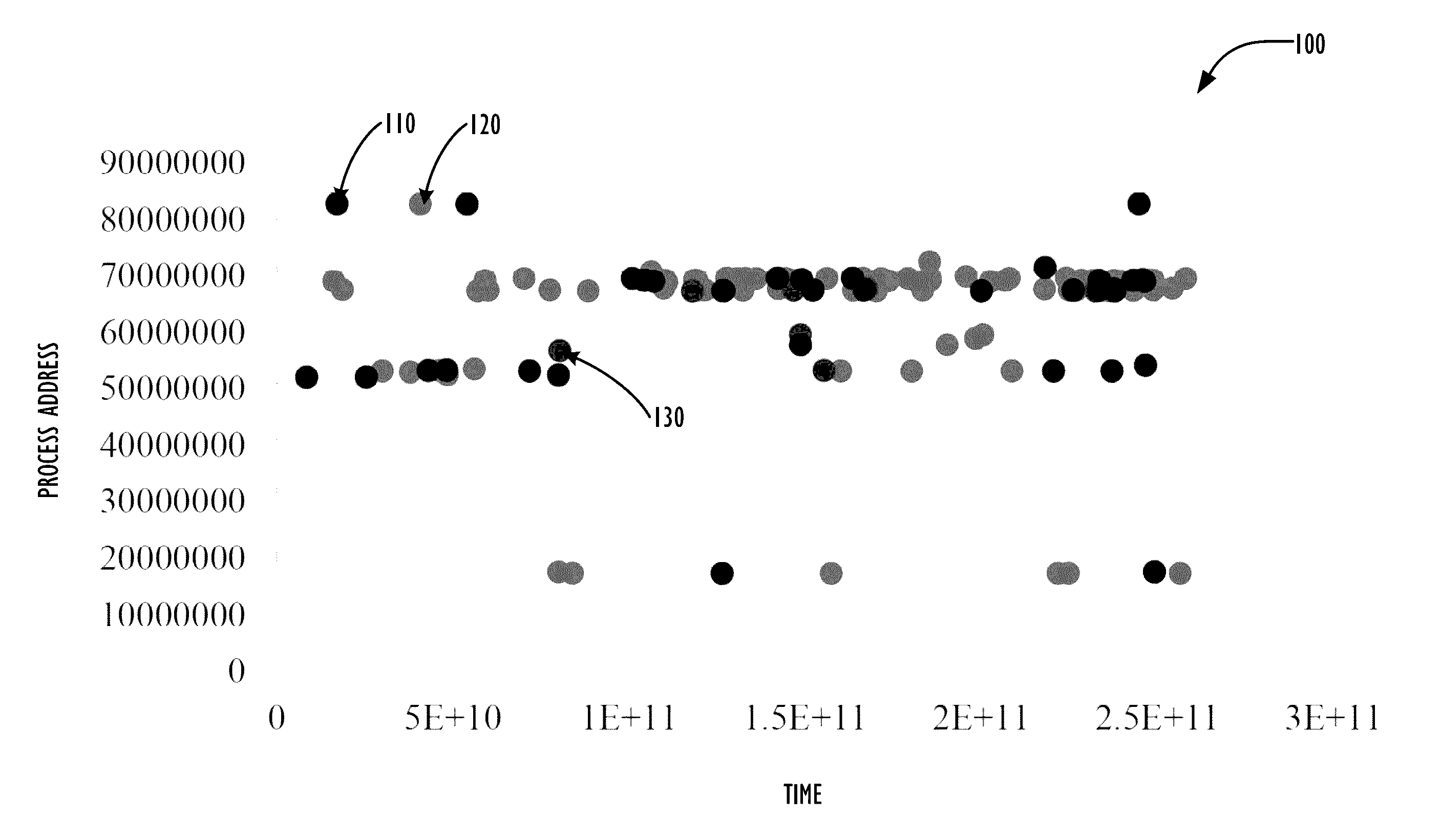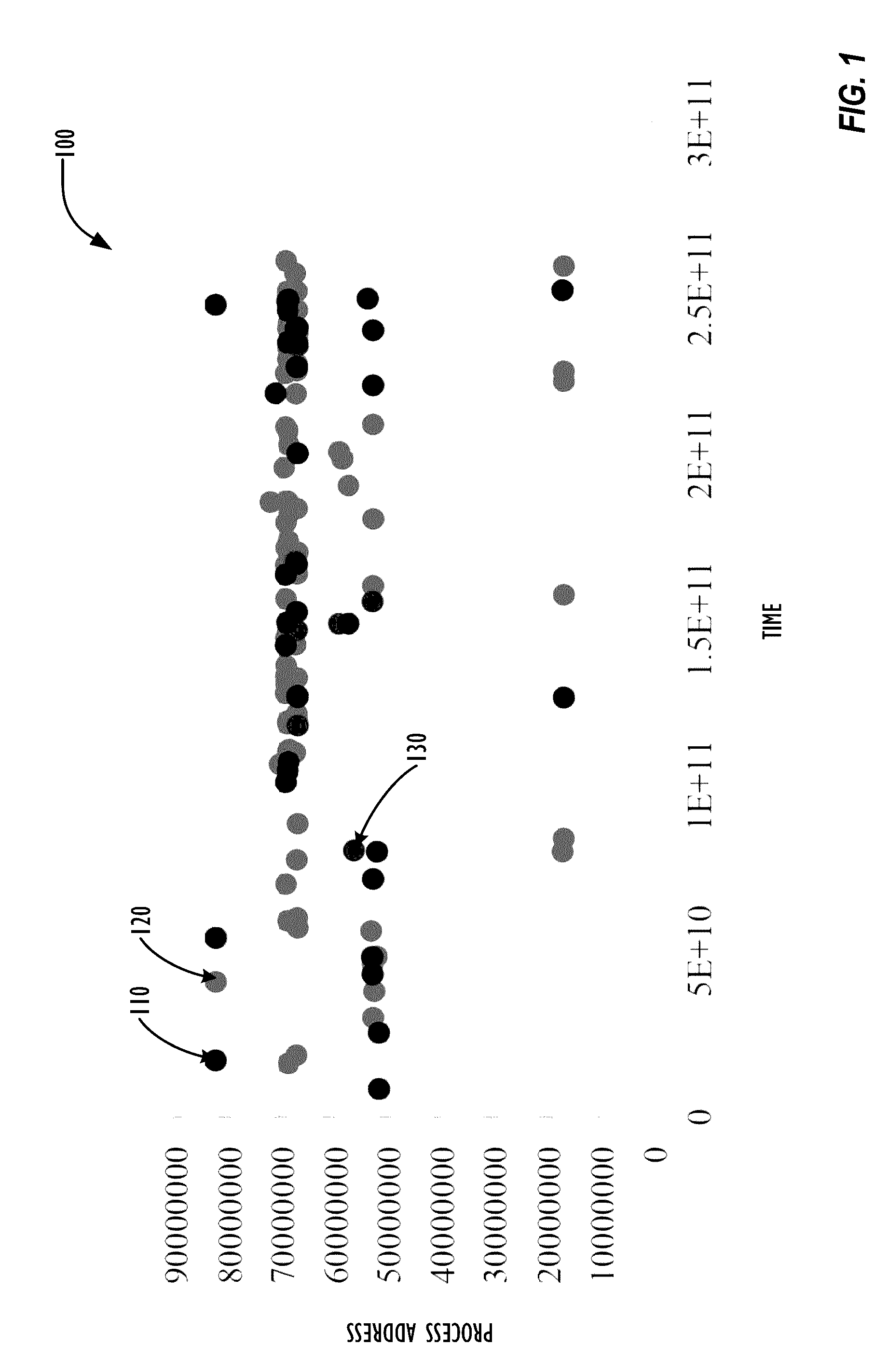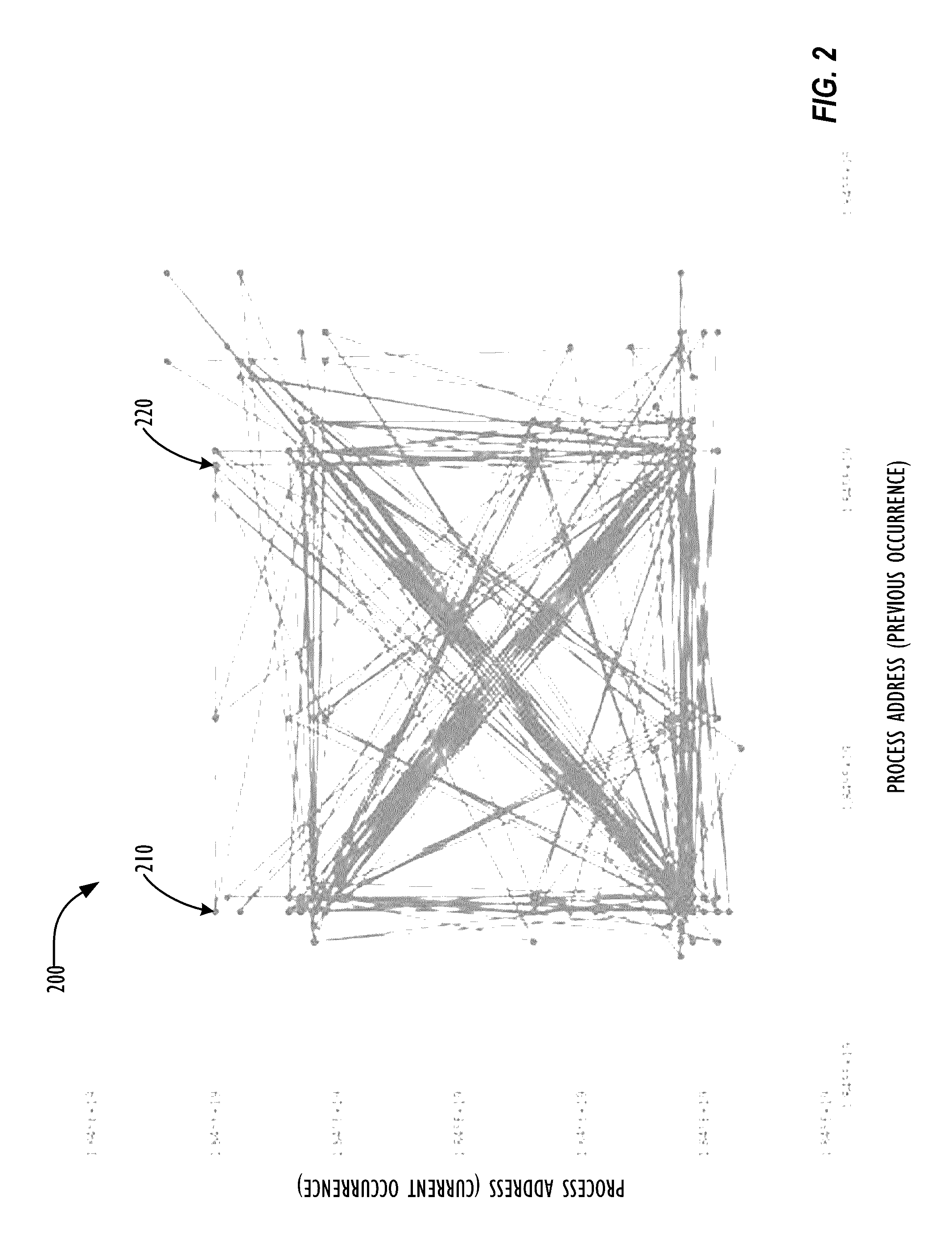Hardened event counters for anomaly detection
an event counter and anomaly detection technology, applied in the field of malware detection, can solve the problems of rootkit removal, difficult rootkit detection, difficult detection and removal of rootkits,
- Summary
- Abstract
- Description
- Claims
- Application Information
AI Technical Summary
Benefits of technology
Problems solved by technology
Method used
Image
Examples
example 2
[0076 includes the subject matter of example 1, wherein the instructions that, when executed, cause the computer system to monitor a first set of hardware counters of the computer system over a first time period comprise instructions that, when executed, cause the computer system to: monitor memory addresses corresponding to the first set of hardware counters during the first time period.
example 3
[0077 includes the subject matter of example 1, wherein the instructions that, when executed, cause the computer system to monitor the first set of hardware counters of the computer system over a second time period comprise instructions that, when executed, cause the computer system to: monitor memory addresses corresponding to the first set of hardware counters during the second time period.
example 4
[0078 includes the subject matter of any of examples 1-3, wherein the first set of hardware counters comprises a hardware counter corresponding to at least one of the following events: machine clear, cache miss, branch miss, self-modifying code, debugging event, single step event, store forward miss, misaligned memory reference, ITLB flush, TLB miss, indirect call, conditional branch, trap, context switch, power management event, and explicit stack pointer change instruction.
PUM
 Login to View More
Login to View More Abstract
Description
Claims
Application Information
 Login to View More
Login to View More - R&D
- Intellectual Property
- Life Sciences
- Materials
- Tech Scout
- Unparalleled Data Quality
- Higher Quality Content
- 60% Fewer Hallucinations
Browse by: Latest US Patents, China's latest patents, Technical Efficacy Thesaurus, Application Domain, Technology Topic, Popular Technical Reports.
© 2025 PatSnap. All rights reserved.Legal|Privacy policy|Modern Slavery Act Transparency Statement|Sitemap|About US| Contact US: help@patsnap.com



